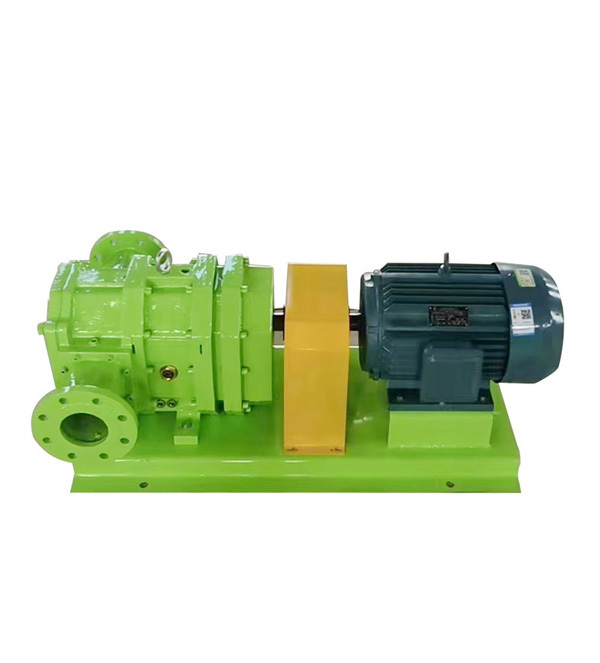Choosing the Right Rubber Lobe Pump for Your Wastewater Treatment Needs
Jul 11,2025

Choosing the Right Rubber Lobe Pump for Your Wastewater Treatment Needs
In the wastewater treatment industry, selecting the correct pump is crucial for efficient operations. The **rubber lobe pump** stands out due to its ability to handle various types of fluids, including those with solids and viscous substances. In this article, we will guide you through the selection process, ensuring you choose the ideal rubber lobe pump tailored to your wastewater treatment requirements.
Understanding Rubber Lobe Pumps
Rubber lobe pumps are a type of positive displacement pump that utilizes rotating lobes to move fluids. The pump's lobes create pockets that trap the liquid and transport it through the discharge port. This mechanism provides a variety of advantages for wastewater applications.
What Makes Rubber Lobe Pumps Unique?
Rubber lobe pumps feature:
- **Gentle handling of fluids**: The design minimizes shear and turbulence, making it suitable for sensitive substances.
- **Versatile material compatibility**: Their rubber lobes can handle abrasive and corrosive fluids, extending the pump’s lifespan.
- **Self-priming capability**: These pumps can handle air and do not require priming before operation.
Key Factors to Consider When Choosing a Rubber Lobe Pump
When selecting a rubber lobe pump for wastewater treatment, several essential factors should guide your decision-making process.
1. Flow Rate Requirements
The flow rate of a pump is fundamentally important in ensuring your wastewater treatment process runs smoothly. Determine the maximum flow rate necessary for your application. Most rubber lobe pumps can accommodate varying flow rates, but identifying the optimal range will help avoid overloading or under-utilizing the pump.
2. Viscosity of the Fluid
The viscosity of the liquid being pumped significantly influences pump selection. Rubber lobe pumps are effective for fluids of various viscosities, but you must assess whether your application involves non-Newtonian fluids or those with significant solid content. This assessment will help in determining the appropriate lobes and pump size.
3. Solids Handling Capability
Different wastewater applications involve varying levels of solids. Ensure that the rubber lobe pump you choose can efficiently handle the solids present in your wastewater. This capability is critical, as blockages can lead to downtime and increased maintenance costs.
Assessing Solid Size and Type
Understanding the size and type of solids in the wastewater will help in selecting a pump that minimizes wear and tear, thereby prolonging its operational life. Generally, rubber lobe pumps can handle solids up to a certain size, so knowing the specifications is vital.
4. Pressure Requirements
Different wastewater treatment processes require varying levels of discharge pressure. Evaluate the system’s pressure requirements and ensure the rubber lobe pump can meet these needs without compromising efficiency.
5. Material Compatibility
The pump's materials must be compatible with the fluids being processed. Rubber lobe pumps come in various rubber compounds that can resist corrosive substances and abrasive materials. Research the types of fluids you will be pumping and select a pump with compatible materials.
Benefits of Choosing Rubber Lobe Pumps for Wastewater Treatment
Rubber lobe pumps offer several advantages that make them a preferred choice in wastewater treatment applications.
Enhanced Efficiency
The unique design of rubber lobe pumps allows for efficient fluid movement, reducing energy consumption. This efficiency translates to lower operational costs over time.
Minimal Shear Stress
Rubber lobe pumps are designed to operate with minimal shear stress. This feature ensures that sensitive materials retain their integrity, making them ideal for applications involving biological materials.
Durability and Longevity
Constructed with robust materials, rubber lobe pumps are designed for longevity. Their ability to handle abrasive fluids and solids contributes to reduced wear and tear, maximizing their operational lifespan.
Application of Rubber Lobe Pumps in Wastewater Treatment
Rubber lobe pumps are versatile and can be used in various wastewater treatment applications, including:
1. Sludge Transfer
In wastewater treatment, transferring sludge efficiently is crucial. Rubber lobe pumps can handle thick, viscous sludge with ease, ensuring consistent flow rates.
2. Chemical Dosing
Chemical dosing is an essential part of wastewater treatment. Rubber lobe pumps can accurately dose chemicals while maintaining the required flow rates, enhancing treatment effectiveness.
3. Biogas Handling
In facilities where biogas is produced, rubber lobe pumps can effectively handle the transfer of this gas, supporting the energy recovery process.
4. Filtration Systems
For filtration systems, rubber lobe pumps can provide a steady flow of wastewater, ensuring optimal performance and reducing wear on filtration equipment.
Maintenance Tips for Rubber Lobe Pumps
Proper maintenance is essential to ensure the longevity and efficiency of rubber lobe pumps. Consider these tips:
Regular Inspections
Routine inspections can identify wear and tear before they become significant issues. Look for signs of leakage, unusual noise, or vibration.
Lubrication
Ensure that all moving parts are adequately lubricated according to the manufacturer's recommendations. This practice minimizes friction and wear.
Replacement of Worn Parts
Monitor the condition of the rubber lobes and replace them as necessary. Worn lobes can lead to decreased efficiency and increased operational costs.
Frequently Asked Questions (FAQs)
1. What is a rubber lobe pump, and how does it work?
A rubber lobe pump is a type of positive displacement pump that uses rotating lobes to move fluids. The lobes create pockets that trap the liquid and transport it through the discharge port.
2. What applications are rubber lobe pumps used for?
Rubber lobe pumps are commonly used in wastewater treatment, sludge transfer, chemical dosing, biogas handling, and filtration systems.
3. How do I determine the right flow rate for my application?
Assess your wastewater treatment process's maximum and minimum flow rate requirements to determine the optimal range for your pump.
4. Can rubber lobe pumps handle solids in wastewater?
Yes, rubber lobe pumps can handle solids, but it is essential to ensure that the pump you select is rated for the specific size and type of solids present in your wastewater.
5. What maintenance is required for rubber lobe pumps?
Regular inspections, lubrication of moving parts, and timely replacement of worn lobes are essential for maintaining rubber lobe pumps.
Conclusion
Choosing the right rubber lobe pump for your wastewater treatment needs involves careful consideration of various factors, including flow rate, viscosity, solids handling, pressure requirements, and material compatibility. By understanding the unique advantages and applications of rubber lobe pumps, you can make an informed decision that enhances the efficiency and longevity of your wastewater treatment system. Whether transferring sludge, dosing chemicals, or handling biogas, a well-chosen rubber lobe pump can significantly improve your operational capabilities. Always ensure that proper maintenance is performed to keep your pump running at peak performance.
PREVIOUS:
Contact Us
E-mail :
sales@yaquanpump.com
service@yaquanpump.com
Phone/WhatsApp:
+44 7301702546
+63 9452052801
Address:
Room B208, Building 2, North Hongqiao Songri Center, No.215 Gaochao Road, Jiading District, Shanghai









